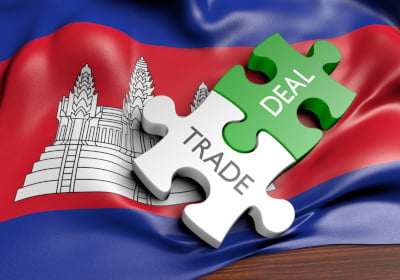Best in Manufacturing – June 02, 2020
Each Tuesday, we publish a list of top articles and other content related to manufacturing in areas like quality control, product development, supply chain management, sourcing, auditing and law.
1. FedEx and Microsoft team up to enhance supply chain solutions
 As a leading logistics provider, FedEx’s move has been receiving much attention. Recently, FedEx announced an unexpected collaboration with multinational technology giant Microsoft.
As a leading logistics provider, FedEx’s move has been receiving much attention. Recently, FedEx announced an unexpected collaboration with multinational technology giant Microsoft.
According to the giants, their first joint service is called FedEx Surround. It will be available later this year. This service will combine FedEx’s logistics network and Microsoft’s cloud together. FedEx’s IoT technology will be responsible to collect the data and Microsoft’s suite of service will analyze the data.
By using this service, companies can detect problems like severe weather or clearance issues. The companies will be able to change the route or think of another solution in advance. FedEx Surround can help them potentially improve shipping times and offer better shipping service.
This partnership between FedEx and Microsoft could be “multiyear”. The two giants might come up with more functions in the future. In the long run, FedEx and Microsoft expect this service to help businesses “transform commerce”.
How to logistics providers improve picking process?
In supply chains, the picking process will be repeated countless times. If logistics providers can improve the speed and accuracy of the picking process, it will significantly improve the whole supply chain service.
In mid-May, FedEx filed a patent application about automating picking process in the warehouse. According to FedEx, the automated process will include a local management system and a data store. The two tools can handle individual "business rules" for any single product stored in the company’s warehouse setting.
After that, the company can use automated picking vehicles to run the rules and automatically pick goods. This can vastly decrease labor cost and increase efficiency.
Amazon has also published a patent application about updating its label applicator. The label applicator will fail to attach labels appropriately if the distance between the box is too big or too small.
To solve this problem, Amazon plans to uses a light source in combination with a photodetector to measure the distance between packages on the conveyor belt. If the machine finds the distance too big or too small, it can automatically adjust the speed of the conveyor belt to control the distance. Further, the labels can be attached properly.
Amazon uses its AWS unlike other players
While players like FedEx is choosing to go with Microsoft’s cloud, Amazon is using its Amazon Web Services (AWS).
AWS is cloud platform that Amazon launched in 2006. Amazon charges a rather low price for the companies who move their existing infrastructure to AWS. It provides a powerful and reliable database for the companies.
By using AWS’s transportation technologies, companies can easily build cloud solutions for airports, seaports, mass transit or any other transportation spot. When meeting any issue at any point, they can notice in a short time and provide a solution quickly.
However, although it has an advanced cloud platform, Amazon is still using third-party shippers to deliver its goods. But many believe that Amazon will eventually ship everything itself with its own logistics capacity.
Follow the link below to learn more about FedEx’s joint partnership with Microsoft.
FedEx, Microsoft are teaming up to deliver packages, widening gap with Amazon – Jessica Bursztynsky, CNBC
2. Cambodia exploring new options for Free Trade Agreements
Nowadays, the trade network is connecting almost every  part of the world together. More connections to other economies, more opportunities to win business. For example, Cambodia is now seeking a Free Trade Agreement (FTA) with the Eurasian Economic Union (EAEU).
part of the world together. More connections to other economies, more opportunities to win business. For example, Cambodia is now seeking a Free Trade Agreement (FTA) with the Eurasian Economic Union (EAEU).
The EAEU contains five countries: Russia, Armenia, Belarus, Kazakhstan and Kyrgyzstan. It’s the home to 183 million people. The bloc has a combined GDP of about $5 trillion and Cambodia can gain great trading opportunities if it achieved the FTA with the EAEU.
As Russia is leading the bloc, Cambodia is seeking Russian support to reach an agreement. But it seems like the two economies still need time to reach the agreement. Seang Thay, a spokesperson at the Ministry of Commerce, explained:
We started to study the benefit of FTAs with the EAUE in 2016…but the process is too slow because we are not working with one country we have been doing with China and Korea. It is a bloc and it needs to be united. That’s why it will take time for the negotiations.
Cambodia is pushing more FTAs
Being a manufacturing country with low labor cost and also a ASEAN country, Cambodia is enjoying multiple FTAs with different countries and regions. At the meantime, the country is also pushing more FTAs with other partners.
Aside from the potential FTA with the EAEU, Cambodia is close to sign a FTA with China. The two nations successfully held meetings in January. Hopefully the two sides will have discussions on finer deals in the middle of the year and sign the deal by end of 2020.
If signed, Cambodia’s exports like textile and vehicle will enjoy huge discounts.
So far, Cambodia’s FTA talks with China and Korea are running smoothly and bearing fruit. Pan Sorasak, the minister of Commerce, said that the government has empowered the processes:
The trade integration is to expand and open the door to access more markets based on free-trade agreements rather than rely on bilateral trade exemptions that are easy to lose in one day.
As for now, Cambodian Ministry of Commerce has established eight different groups to be in charge of the trade negotiations with each potential partner. The country’s trade future looks prosperous.
What to import from Cambodia?
With so many FTAs’ support, you might find manufacturing in Cambodia attracting. Cambodia has one of the lowest labor costs in Asia and it can be an alternative to diversify your supply chain. Let’s learn more about what to import from Cambodia and help you with your decision (related: Is Cambodia Poised to Become a Major Manufacturing Hub?).
Sandwiched by Thailand and Vietnam, Cambodia has a geographical advantage as it’s in the “spillover” region of these two countries. Businesses will consider Cambodia by the way when investing in Vietnam and Thailand. This gives Cambodia extra opportunities.
If you are looking for made-in-Cambodia goods, garment and textile will be the first choice. The garment and textile industry is the largest export industry in Cambodia and the country export accessories too. You will find plenty suppliers to meet your needs.
What’s more, import furniture from Cambodia can be a nice choice too. This is especially true if you are going to import to the U.S. as the tariff is much lower than importing from traditional furniture maker China.
Follow the link below to learn more about.
Cambodia pushes hard on free-trade agreements – Sorn Sarath, Khmer Times
3. Can Malaysia be an alternative sourcing location?
 Due to the impact of the COVID-19, many businesses is now re-thinking about their strategies. For import & export businesses, the virus outbreak has forced some of them to relocate their supply chain. But where to? Perhaps Malaysia can be your potential “China plus one” solution.
Due to the impact of the COVID-19, many businesses is now re-thinking about their strategies. For import & export businesses, the virus outbreak has forced some of them to relocate their supply chain. But where to? Perhaps Malaysia can be your potential “China plus one” solution.
Malaysia is a well internationalized country located in the heart of Southeast Asia. Lying in the Straits of Malacca, Malaysia has a natural shipping channel connecting the east and west: the Indian Ocean to the west and the Pacific Ocean to the east.
Malaysia is not a traditional manufacturing country. It is one of the most advanced economies in Southeast Asia. It has an upper-middle-income economy and is expected to become a high-income status by 2024.
In 2019, the manufacturing sector accounted for 23 percent of Malaysia’s total GDP. Now, under the 11th Malaysia Plan, the Malaysian government wants to turn the country to a productivity-driven economy. It can be a golden opportunity to start business in Malaysia.
Why is Malaysia benefitting from the trade war?
The U.S.-China trade war has deeply affected industries in China. But it has pushed many opportunities to other countries as well. Nomura, the Asia-based financial services group, said Malaysia is one of the top five beneficiaries of the U.S.-China trade war.
Nomura has pointed out that Malaysia mainly benefits from its electronics industry, such as electronic integrated circuits and semiconductors. Muhammed Abdul Khalid, an economic advisor to Malaysian Prime Minister, said the manufacturing relocation has brought 0.1 percent more point to Malaysia.
Malaysia's semiconductor manufacturing industry has benefited from its historical foundation. In the 1970s, big firms like Intel, OSRAM and HP has established their manufacturing operations in Malaysia. After years of growth, the country now has a mature manufacturing capacity.
Additionally, compared to China, Malaysia has a stronger legal and regulatory system. It will help companies better solve critical issues like IP protection. This is especially important because the research and development of semiconductors has gathered a lot of effort, and IP protection is highly needed.
What’s more, Malaysia has a strong education system to support the cultivation of talents. Companies can easier find local technical support in Malaysia.
Will manufacturing in Malaysia be your choice?
But is manufacturing in Malaysia easy? What are the advantages and the risks? Let’s find out.
For starters, Malaysia can be a safe choice as it ranked 12th of the World Bank’s 2019 Ease of Doing Business Index. For comparison, China ranked 46th and Vietnam ranked 69th. You can handle with less regulations and enjoy a smoother start if you start business in Malaysia.
Besides, Malaysia has a rather advanced infrastructure than other Asian manufacturing countries. In the World Bank’s 2018 Logistics Performance Index, Malaysia ranked 41st. An organized transportation network can guarantee the timeliness of transportation and reduce risk of delay.
But Malaysia is not competitive in terms of labor force and labor costs. Malaysia has a limited labor force with approximately 15.28 million people. This figure is much smaller than China’s 805.67 million or Indonesia’s 133 million. Labor-intensive industry might have trouble finding enough labor in Malaysia.
Also, the minimum wage in Malaysia is $263.57 per month. This is high among Asian manufacturing countries. It will be hard to control labor cost if you manufacturer in Malaysia.
In a nutshell, manufacturing in Malaysia doesn’t mean there is no risk. Understand what your need is according to your specific product type can help you make wiser decisions.
Follow the link below to learn more about.
China Plus One Series: Understanding Malaysia’s Appeal to Foreign Investors – Zoey Zhang, ASEAN Briefing
We’re constantly scanning the web for top manufacturing stories and news. If you’d like to submit an article for consideration for our weekly Best in Manufacturing, send us a message and let us know







